Form 3520
Department of the Treasury Internal Revenue Service
Annual Return To Report Transactions With
Foreign Trusts and Receipt of Certain Foreign Gifts
▶Go to www.irs.gov/Form3520 for instructions and the latest information.
Note: All information must be in English. Show all amounts in U.S. dollars. File a separate Form 3520 for each foreign trust.
For calendar year 2021, or tax year beginning |
|
, 2021, ending |
|
, 20 |
A |
Check appropriate boxes: |
Initial return |
Final return |
Amended return |
|
|
|
|
|
|
|
|
|
|
B |
Check box that applies to person filing return: |
Individual |
Partnership |
Corporation |
Trust |
Executor |
|
|
C |
Check if any excepted specified foreign financial assets are reported on this form. See instructions |
Check all applicable boxes. See applicable instructions.

 You are (a) a U.S. transferor who, directly or indirectly, transferred money or other property during the current tax year to a foreign trust; (b) a U.S. person who (1) during the current tax year, transferred property (including cash) to a related foreign trust (or a person related to the trust) in exchange for an obligation, or (2) holds a qualified obligation from the trust that is currently outstanding; or (c) the executor of the estate of a U.S. decedent and (1) the decedent made a transfer to a foreign trust by reason of death, (2) the decedent was treated as the owner of any portion of a foreign trust immediately prior to death, or (3) the decedent’s estate included any portion of the assets of a foreign trust. Complete all applicable identifying information requested below and Part I of the form.
You are (a) a U.S. transferor who, directly or indirectly, transferred money or other property during the current tax year to a foreign trust; (b) a U.S. person who (1) during the current tax year, transferred property (including cash) to a related foreign trust (or a person related to the trust) in exchange for an obligation, or (2) holds a qualified obligation from the trust that is currently outstanding; or (c) the executor of the estate of a U.S. decedent and (1) the decedent made a transfer to a foreign trust by reason of death, (2) the decedent was treated as the owner of any portion of a foreign trust immediately prior to death, or (3) the decedent’s estate included any portion of the assets of a foreign trust. Complete all applicable identifying information requested below and Part I of the form.
 You are a U.S. owner of all or any portion of a foreign trust at any time during the tax year. Complete all applicable identifying information requested below and Part II of the form.
You are a U.S. owner of all or any portion of a foreign trust at any time during the tax year. Complete all applicable identifying information requested below and Part II of the form.

 You are (a) a U.S. person (including a U.S. owner) or an executor of the estate of a U.S. person who, during the current tax year, received, directly or indirectly, a distribution from a foreign trust; (b) a U.S. person who is a U.S. owner or beneficiary of a foreign trust and in the current tax year, you or a U.S. person related to you received (1) a loan of cash or marketable securities, directly or indirectly, from such foreign trust, or (2) the uncompensated use of trust property; or (c) a U.S. person who is a U.S. owner or beneficiary of a foreign trust and in the current tax year such foreign trust holds an outstanding qualified obligation of yours or a U.S. person related to you. Complete all applicable identifying information requested below and Part III of the form.
You are (a) a U.S. person (including a U.S. owner) or an executor of the estate of a U.S. person who, during the current tax year, received, directly or indirectly, a distribution from a foreign trust; (b) a U.S. person who is a U.S. owner or beneficiary of a foreign trust and in the current tax year, you or a U.S. person related to you received (1) a loan of cash or marketable securities, directly or indirectly, from such foreign trust, or (2) the uncompensated use of trust property; or (c) a U.S. person who is a U.S. owner or beneficiary of a foreign trust and in the current tax year such foreign trust holds an outstanding qualified obligation of yours or a U.S. person related to you. Complete all applicable identifying information requested below and Part III of the form.

 You are a U.S. person who, during the current tax year, received certain gifts or bequests from a foreign person. Complete all applicable identifying information requested below and Part IV of the form.
You are a U.S. person who, during the current tax year, received certain gifts or bequests from a foreign person. Complete all applicable identifying information requested below and Part IV of the form.
1a |
Name of U.S. person(s) with respect to whom this Form 3520 is being filed (see instructions) |
b |
Taxpayer identification number (TIN) |
|
|
|
|
|
|
|
c |
Number, street, and room or suite no. If a P.O. box, see instructions. |
|
|
d |
Spouse’s TIN |
|
|
|
|
|
|
|
|
e |
City or town |
|
f State or province |
|
g ZIP or foreign postal code |
h |
Country |
|
|
|
|
|
i |
Check the box if you are married and filing a current year joint income tax return, and you are filing a joint Form 3520 with your spouse . |
|
|
j |
If an automatic 2-month extension applies for the U.S. person’s tax return, check this box and attach statement. See instructions . . . |
|
|
|
k |
If an extension was requested for the tax return, check this box |
and enter the form number of the tax return to be filed ▶ |
|
|
|
|
|
|
2a |
Name of foreign trust (if applicable) |
|
|
|
b Employer identification number (EIN), if any |
cNumber, street, and room or suite no. If a P.O. box, see instructions.
dDate foreign trust was created
gZIP or foreign postal code
3 |
Did the foreign trust appoint a U.S. agent (defined in the instructions) who can provide the IRS with all relevant trust information? |
Yes |
No |
|
If “Yes,” complete lines 3a through 3g. If “No,” and you are required to complete Part I, complete lines 15 through 18. |
|
|
|
|
|
|
|
|
|
|
|
3a |
Name of U.S. agent |
|
|
|
b |
TIN, if any |
|
|
|
|
|
|
|
|
|
|
c Number, street, and room or suite no. If a P.O. box, see instructions. |
|
|
|
|
|
|
|
|
|
|
|
|
|
|
d |
City or town |
e State or province |
f ZIP or postal code |
g |
Country |
|
|
|
|
|
|
|
|
|
|
|
4a |
Name of U.S. decedent (see instructions) |
b Address |
|
c |
TIN of decedent |
|
|
|
|
|
|
|
|
|
|
|
d |
Date of death |
|
|
|
e |
EIN of estate |
|
|
|
|
|
|
|
|
|
|
|
fCheck applicable box.
U.S. decedent made transfer to a foreign trust by reason of death. |
|
|
U.S. decedent treated as owner of foreign trust immediately prior to death. |
|
|
Assets of foreign trust were included in estate of U.S. decedent. |
|
|
For Privacy Act and Paperwork Reduction Act Notice, see instructions. |
Cat. No. 19594V |
Form 3520 (2021) |
Part I Transfers by U.S. Persons to a Foreign Trust During the Current Tax Year (see instructions)
6a Country code of country where trust was created
bCountry code of country whose law governs the trust
7a Will any person (other than the foreign trust) be treated as the owner of the transferred assets after the transfer? . . . . |
Yes |
No |
b(i)
Name of foreign
trust owner
(iii)
Country of residence
(v)
Relevant Code
section
8 |
Was the transfer a completed gift or bequest? If “Yes,” see instructions |
|
Yes |
|
No |
9a |
Now or at any time in the future, can any part of the income or corpus of the trust benefit any U.S. beneficiary? . . . . |
|
Yes |
|
No |
b |
If “No,” could the trust be revised or amended to benefit a U.S. beneficiary? |
|
Yes |
|
No |
10 |
Reserved for future use |
|
Yes |
|
No |
|
|
Schedule A—Obligations of a Related Trust (see instructions)
11a During the current tax year, did you transfer property (including cash) to a related foreign trust in exchange for an obligation of the trust or an obligation of a person related to the trust? See instructions . . . . . . . . . . . . . .
If “Yes,” complete the rest of Schedule A, as applicable. If “No,” go to Schedule B.
bWere any of the obligations you received (with respect to a transfer described in line 11a above) qualified obligations? . .
If “Yes,” complete the rest of Schedule A and attach a copy of each loan document entered into with respect to each qualified obligation reported on line 11b. If these documents have been attached to a Form 3520 filed within the previous 3 years, attach only relevant updates.
If “No,” go to Schedule B.
(i)
Date of transfer giving rise to obligation
12With respect to each qualified obligation you reported on line 11b, do you agree to extend the period of assessment of any income or transfer tax attributable to the transfer, and any consequential income tax changes for each year that the
obligation is outstanding, to a date 3 years after the maturity date of the obligation? |
Yes |
No |
Note: You have the right to refuse to extend the period of limitations or limit this extension to a mutually agreed-upon |
|
|
issue(s) or mutually agreed-upon period of time. Generally, if you refuse to extend the period of limitations with respect to |
|
|
each qualified obligation you reported on line 11b, then such obligation is not a qualified obligation and you cannot check |
|
|
“Yes” to the question on line 11b. |
|
|
Schedule B—Gratuitous Transfers (see instructions)
13During the current tax year, did you make any transfers (directly or indirectly) to the trust and receive less than FMV, or no
consideration at all, for the property transferred? |
. . . . . . . . . . . . . |
. . . . . . . . . |
Yes |
No |
If “Yes,” complete columns (a) through (i) below and the rest of Schedule B, as applicable. When completing columns (a) |
|
|
through (i) with respect to each nonqualified obligation, enter -0- in column (h). |
|
|
|
|
If “No,” go to Schedule C. |
|
|
|
|
|
|
|
|
|
|
|
|
|
|
|
|
|
|
|
(a) |
(b) |
(c) |
(d) |
|
(e) |
(f) |
(g) |
(h) |
(i) |
|
Date of |
Description |
FMV of property |
U.S. adjusted |
Gain recognized |
Excess, if any, |
Description |
FMV of property |
Excess of |
|
transfer |
of property |
transferred |
basis of |
|
at time of |
of column (c) |
of property |
received |
column (c) over |
|
transferred |
|
property |
|
transfer, |
over the sum of |
received, |
|
column (h) |
|
|
|
|
transferred |
|
if any |
columns (d) and (e) |
if any |
|
|
|
|
|
|
|
|
|
|
|
|
|
|
|
|
|
|
|
|
|
|
|
|
|
|
|
|
|
|
|
|
|
|
|
|
|
|
|
|
|
|
|
|
|
|
|
Totals ▶ |
|
|
|
|
|
$ |
|
|
$ |
|
14If you have a sale or loan document in connection with a transfer reported on line 13, complete 14a through 14c and attach the relevant document(s). If these documents have been attached to a Form 3520 filed within the previous 3 years, attach only relevant updates.
|
|
|
|
Attached |
Year |
|
Are you attaching a copy of any of the following? |
Yes |
No |
Previously |
Attached |
a |
Sale document |
|
|
|
|
b |
Loan document |
|
|
|
|
c |
Subsequent variances to original sale or loan documents |
|
|
|
|
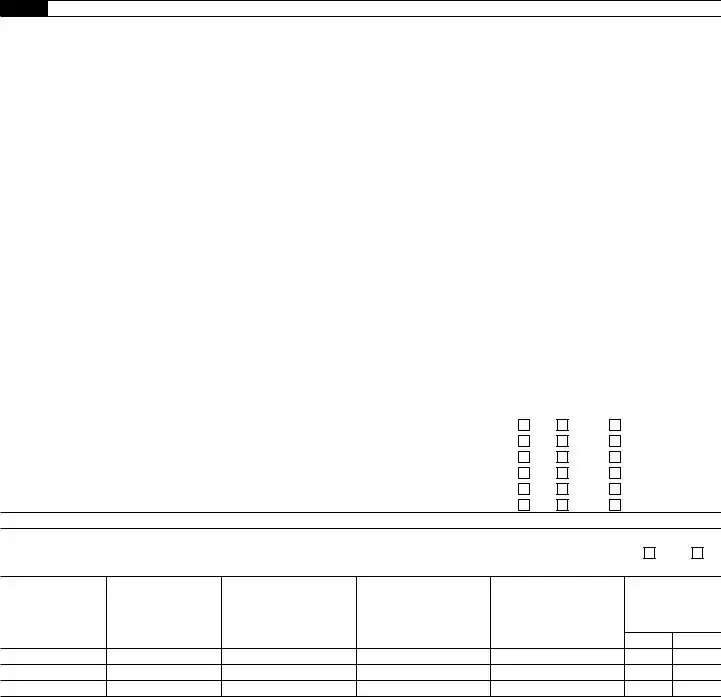
Part I Schedule B—Gratuitous Transfers (continued)
Note: Complete lines 15 through 18 only if you answered “No” to line 3, acknowledging that the foreign trust did not appoint a U.S. agent to provide the IRS with all relevant trust information.
15 |
(a) |
(b) |
|
(c) |
|
(d) |
|
Name of beneficiary |
Address of beneficiary |
|
U.S. beneficiary? |
TIN, if any |
|
|
|
|
|
|
|
|
|
|
|
|
Yes |
|
No |
|
|
|
|
|
|
|
|
|
|
|
|
|
|
|
|
|
|
|
|
|
|
|
|
|
|
|
|
|
|
|
|
|
|
|
|
|
|
|
|
|
16 |
(a) |
(b) |
|
|
|
|
(c) |
|
Name of trustee |
Address of trustee |
|
|
|
|
TIN, if any |
|
|
|
|
|
|
|
|
|
|
|
|
|
|
|
|
|
|
|
|
|
|
|
|
|
|
|
|
|
|
17 |
(a) |
(b) |
(c) |
|
(d) |
|
Name of other person |
Address of other person with trust powers |
Description of powers |
|
TIN, if any |
|
with trust powers |
|
|
|
|
|
|
|
|
|
|
|
|
|
|
|
|
|
|
|
|
|
|
|
|
|
|
|
|
|
|
|
|
|
|
|
|
|
|
|
|
18If you checked “No” on line 3, you are required to attach a copy of all trust documents as indicated below. If these documents have been attached to a Form 3520-A or Form 3520 filed within the previous 3 years, attach only relevant updates.
|
|
|
|
Attached |
Year |
|
Are you attaching a copy of any of the following? |
Yes |
No |
Previously |
Attached |
a |
Summary of all written and oral agreements and understandings relating to the trust . . . . |
|
|
|
|
b |
Trust instrument |
|
|
|
|
c |
Memoranda or letters of wishes |
|
|
|
|
d |
Subsequent variances to original trust documents |
|
|
|
|
e |
Trust financial statements |
|
|
|
|
f |
Organizational chart and other trust documents |
|
|
|
|
Schedule C—Qualified Obligations Outstanding in the Current Tax Year (see instructions)
19Did you, at any time during your tax year, hold an outstanding obligation of a related foreign trust (or a person related to the
trust) that you reported as a qualified obligation in the current tax year? |
Yes |
No |
If “Yes,” complete columns (a) through (f) below for each obligation. |
|
|
(a)
Date of original
obligation
(b)
Tax year qualified
obligation first reported
(c)
Amount of principal
payments made during
your tax year
(d)
Amount of interest
payments made during
your tax year
(e)
Balance of the outstanding
obligation at the end
of the tax year
(f)
Does the obligation
still meet the criteria for a qualified obligation?
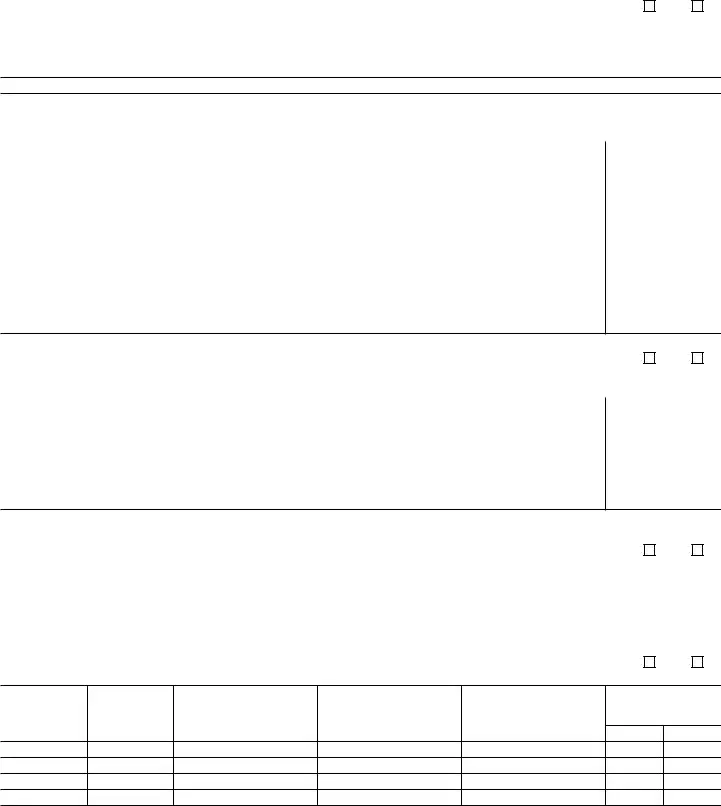
Form 3520 (2021) |
|
|
|
|
|
|
Page 4 |
Part II |
U.S. Owner of a Foreign Trust (see instructions) |
|
|
|
|
|
20 |
|
(a) |
|
|
(b) |
(c) |
(d) |
|
(e) |
|
|
|
Name of foreign |
|
Address |
Country of tax residence |
TIN, if any |
|
Relevant Code |
|
|
trust owner |
|
|
section |
|
|
|
|
|
|
|
|
|
|
|
|
|
|
|
|
|
|
|
|
|
|
|
|
|
|
|
|
|
|
|
|
|
|
21a |
Country code of country where foreign trust was created |
|
b Country code of country whose law governs the trust |
c Date foreign trust was created |
|
|
|
|
|
|
22 |
Did the foreign trust file Form 3520-A for the current year? |
. . . . . |
Yes |
No |
|
If “Yes,” attach the Foreign Grantor Trust Owner Statement you received from the foreign trust. |
|
|
|
|
|
If “No,” to the best of your ability, complete and attach a substitute Form 3520-A for the foreign trust. |
|
|
|
|
|
See instructions for information on penalties for failing to complete and attach a substitute Form 3520-A. |
|
|
|
|
23Enter the gross value of the portion of the foreign trust that you are treated as owning at the end of your tax year . ▶ $
Part III Distributions to a U.S. Person From a Foreign Trust During the Current Tax Year (see instructions)
Note: If you received an amount from a portion of a foreign trust of which you are treated as the owner, only complete lines 24 and 27.
24Enter cash amounts or FMV of property received, directly or indirectly, during your current tax year, from the foreign trust (exclude loans and uncompensated use of trust property included on line 25).
(a) |
(b) |
(c) |
(d) |
(e) |
(f) |
Date of distribution |
Description of property received |
FMV of property received |
Description of property |
FMV of property |
Excess of column (c) |
|
|
(determined on date |
transferred, if any |
transferred |
over column (e) |
|
|
of distribution) |
|
|
|
|
|
|
|
|
|
|
|
|
|
|
|
|
|
|
|
|
|
|
|
|
|
|
|
|
|
|
|
|
|
|
|
|
|
|
|
|
|
|
|
|
|
|
|
|
|
|
|
|
|
|
|
|
|
Total |
. . . . . . . . . . . . . . . . . . . . . . . . . . . . . . . . . . ▶ $ |
25During your current tax year, did you (or a person related to you) receive a loan or uncompensated use of trust property from a
related foreign trust (including an extension of credit upon the purchase of property from the trust)? |
Yes |
No |
If “Yes,” complete columns (a) through (g) below for each such loan or use of trust property. |
|
|
Note: See instructions for additional information, including how to complete columns (a) through (g) for use of trust property.
(a) |
(b) |
(c) |
(d) |
|
(e) |
(f) |
(g) |
Is the obligation a |
Amount treated as |
FMV of loan proceeds |
Date of original |
Maximum term of |
Interest rate |
qualified obligation? |
FMV of qualified |
distribution from the trust |
or property |
transaction |
repayment of |
of obligation |
|
|
|
obligation |
(subtract column (f) |
|
|
obligation |
|
Yes |
|
No |
|
from column (a)) |
|
|
|
|
|
|
|
|
|
|
|
|
|
|
|
|
|
|
|
|
|
|
|
|
|
|
|
Total |
. . . . . . . . . . . . . . . . . . . . . . . . . . . . . . . . . . ▶ $ |
26With respect to each obligation you reported as a qualified obligation on line 25, do you agree to extend the period of assessment of any income or transfer tax attributable to the transaction, and any consequential income tax changes for each
year that the obligation is outstanding, to a date 3 years after the maturity date of the obligation? . . . |
. |
. |
. |
. . . |
Yes |
No |
Note: You have the right to refuse to extend the period of limitations or limit this extension to a mutually agreed-upon issue(s) |
|
|
or mutually agreed-upon period of time. Generally, if you refuse to extend the period of limitations with respect to an obligation |
|
|
that you reported as a qualified obligation on line 25, then such obligation is not a qualified obligation and you cannot check |
|
|
“Yes” in column (e) of line 25. |
|
|
|
|
|
|
|
27 Total distributions received during your current tax year. Add line 24, column (f), and line 25, column (g) . |
. |
. |
. |
▶ $ |
|
|
|
|
|
|
|
|
|
|
28Did the trust, at any time during the current tax year, hold an outstanding obligation of yours (or a person related to you) that
you reported as a qualified obligation? |
Yes |
No |
If “Yes,” complete columns (a) through (f) below for each obligation. |
|
|
(a) |
(b) |
(c) |
(d) |
Date of original |
Tax year qualified |
Amount of principal payments |
Amount of interest payments |
loan transaction |
obligation first |
made during your tax year |
made during your tax year |
|
reported |
|
|
(e)
Balance of the outstanding
obligation at the end
of the tax year
(f)
Does the loan still
meet the criteria of a qualified obligation?
Part III Distributions to a U.S. Person From a Foreign Trust During the Current Tax Year (continued)
29Did you receive a Foreign Grantor Trust Beneficiary Statement from the foreign trust with respect to a distribution? If “Yes,” attach the statement and do not complete the remainder of Part III with respect to that distribution.
If “No,” complete Schedule A with respect to that distribution. Also, complete Schedule C if you enter an amount greater than zero on line 37.
30Did you receive a Foreign Nongrantor Trust Beneficiary Statement from the foreign trust with respect to a distribution?
If “Yes,” attach the statement and complete either Schedule A or Schedule B below. See instructions. Also, complete Schedule C if you enter an amount greater than zero on line 37 or line 41a.
If “No,” complete Schedule A with respect to that distribution. Also, complete Schedule C if you enter an amount greater than zero on line 37.
Schedule A—Default Calculation of Trust Distributions (see instructions)
31 |
Enter amount from line 27 |
. . . . . . . . . |
|
31 |
32 |
Number of years the trust has been a foreign trust (see instructions) . . . ▶ |
32 |
|
|
|
33Enter total distributions received from the foreign trust during the 3 preceding tax years (or during the number
|
of years the trust has been a foreign trust, if fewer than 3 years) |
33 |
34 |
Multiply line 33 by 1.25 |
34 |
35Average distribution. Divide line 34 by 3.0 (or the number of years the trust has been a foreign trust, if fewer
|
than 3 years) and enter the result |
35 |
36 |
Amount treated as ordinary income earned in the current year. Enter the smaller of line 31 or line 35 . . . |
36 |
37 |
Amount treated as accumulation distribution. Subtract line 36 from line 31. If zero, do not complete the rest of Part III |
37 |
38 |
Applicable number of years of trust. Divide line 32 by 2.0 and enter the result here ▶ |
38 |
|
Schedule B—Actual Calculation of Trust Distributions (see instructions)
39 |
Enter amount from line 27 |
40a |
Amount treated as ordinary income in the current tax year |
b |
Qualified dividends |
. . . . . . . . . . . ▶ |
40b |
|
41a |
Amount treated as accumulation distribution. If zero, do not complete Schedule C below |
b |
Amount of line 41a that is tax exempt . |
. . . . . . . . . . . ▶ |
41b |
|
42a |
Amount treated as net short-term capital gain in the current tax year |
b |
Amount treated as net long-term capital gain in the current tax year |
c |
28% rate gain |
. . . . . . . . . . . ▶ |
42c |
|
d |
Unrecaptured section 1250 gain . . |
. . . . . . . . . . . ▶ |
42d |
|
43 |
Amount treated as distribution from trust corpus |
44Enter any other distributed amount received from the foreign trust not included on lines 40a, 41a, 42a, 42b,
|
and 43. (Attach explanation.) |
45 |
Amount of foreign trust’s aggregate undistributed net income |
46 |
Amount of foreign trust’s weighted undistributed net income |
47Applicable number of years of trust. Divide line 46 by line 45 and enter the result
here . . . . . . . . . . . . . . . . . . . . . . ▶ |
47 |
Schedule C—Calculation of Interest Charge (see instructions)
39
40a
41a
42a
42b
43
44
45
46
48 |
Enter accumulation distribution from line 37 or line 41a, as applicable |
48 |
49 |
Enter tax on total accumulation distribution from line 28 of Form 4970. (Attach Form 4970—see instructions.) . |
49 |
50Enter applicable number of years of foreign trust from line 38 or line 47, as
|
applicable (round to nearest half year) . . . . . . . . . . . . ▶ |
50 |
|
|
51 |
Combined interest rate imposed on the total accumulation distribution (see instructions) |
|
51 |
52 |
Interest charge. Multiply the amount on line 49 by the combined interest rate on line 51 |
52 |
53Tax attributable to accumulation distributions. Add lines 49 and 52. Enter here and as “additional tax” on your
Form 3520 (2021)
Part IV U.S. Recipients of Gifts or Bequests Received During the Current Tax Year From Foreign Persons (see instructions)
54During your current tax year, did you receive more than $100,000 that you treated as gifts or bequests from a nonresident
alien (including a distribution received from a domestic trust treated as owned by a foreign person) or a foreign estate? See |
Yes |
No |
instructions for special rules regarding related donors |
. |
. |
. |
. |
. |
. |
. |
. |
. |
. . . |
If “Yes,” complete columns (a) through (c) with respect to each such gift or bequest in excess of $5,000. If more space is |
|
|
needed, attach a statement. |
|
|
|
|
|
|
|
|
|
|
|
|
|
|
|
|
|
|
|
|
|
|
|
|
|
|
|
|
|
|
(a) |
|
(b) |
|
|
|
|
|
|
|
|
|
|
|
(c) |
|
Date of gift or bequest |
|
Description of property received |
|
|
|
|
|
|
|
|
|
|
FMV of property received |
|
|
|
|
|
|
|
|
|
|
|
|
|
|
|
|
|
|
|
|
|
|
|
|
|
|
|
|
|
|
|
|
|
|
|
|
|
|
|
|
|
|
|
|
|
|
|
|
|
|
|
|
|
|
|
|
|
|
|
|
Total |
. |
. |
. |
. |
. |
. |
. |
. |
. |
▶ |
$ |
|
|
55During your current tax year, did you receive amounts from a foreign corporation or a foreign partnership that you treated as
|
|
gifts in excess of the amount provided in the instructions? See instructions regarding related donors |
. . . . |
. . . |
Yes |
No |
|
|
If “Yes,” complete columns (a) through (g) with respect to each such gift. If more space is needed, attach a statement. |
|
|
|
|
|
|
|
|
|
|
|
|
|
|
|
|
|
|
|
|
|
|
|
|
(a) |
|
(b) |
|
|
|
|
(c) |
|
|
|
|
(d) |
|
|
Date of gift |
|
Name of foreign donor |
|
|
|
|
Address of foreign donor |
|
|
|
|
TIN, if any |
|
|
|
|
|
|
|
|
|
|
|
|
|
|
|
|
|
|
|
|
|
|
|
|
|
|
|
|
|
|
|
|
|
|
|
|
|
|
|
|
|
|
|
|
|
|
|
|
|
|
|
|
|
|
|
|
|
|
|
|
|
|
|
|
|
|
|
|
|
|
|
|
|
|
|
|
|
|
|
|
|
|
|
|
|
|
|
|
|
|
|
|
|
|
|
|
|
|
|
(e) |
|
|
|
|
|
|
(f) |
|
|
|
|
(g) |
|
Check the box that applies to the foreign donor |
|
|
|
|
|
|
|
|
|
|
|
|
|
Description of property received |
|
|
|
FMV of property received |
|
|
|
|
|
|
|
|
|
|
|
|
Corporation |
|
Partnership |
|
|
|
|
|
|
|
|
|
|
|
|
|
|
|
|
|
|
|
|
|
|
|
|
|
|
|
|
|
|
|
|
|
|
|
|
|
|
|
|
|
|
|
|
|
|
|
|
|
|
|
|
|
|
|
|
|
|
|
|
|
|
|
|
|
|
|
|
|
|
|
|
|
|
|
|
|
|
56 |
|
Do you have any reason to believe that the foreign donor, in making any gift or bequest described in lines 54 and 55, was |
|
|
|
|
acting as a nominee or intermediary for any other person? If “Yes,” see instructions |
. . . . |
. . . |
Yes |
No |
|
|
Under penalties of perjury, I declare that I have examined this return, including any accompanying reports, schedules, or statements, and to the best of my |
|
Sign |
|
knowledge and belief, it is true, correct, and complete. |
|
|
|
|
|
|
|
|
|
|
Here |
▲ |
|
|
|
|
|
|
|
▲ |
|
|
|
|
▲ |
|
|
|
|
|
|
|
|
|
|
|
|
|
|
|
|
|
|
|
|
|
Signature |
|
|
|
|
|
Title |
|
|
Date |
|
|
|
|
|
|
|
|
|
|
|
|
|
|
|
|
|
|
|
|
|
|
|
|
|
|
|
|
|
|
|
Paid |
|
|
Print/Type preparer’s name |
Preparer’s signature |
|
|
|
Date |
|
Check |
if |
PTIN |
|
|
|
|
|
|
|
|
|
|
|
|
|
|
|
|
|
|
|
|
|
|
|
|
|
|
|
|
|
|
|
self-employed |
|
|
|
Preparer |
|
|
|
|
|
|
|
|
|
|
|
|
|
|
|
|
|
|
|
|
|
|
|
|
|
|
|
|
|
|
Firm’s name |
▶ |
|
|
|
|
|
|
|
Firm’s EIN ▶ |
|
|
|
Use Only |
|
|
|
|
|
|
|
|
|
|
Firm’s address ▶ |
|
|
|
|
|
|
|
Phone no. |
|
|
|
|
|
|
|
|
|
|
|
|
|
|
|
|
|
|
|
|
|
|
|
|
|
|
|
|
|
|
|
|
|
|
|
Form 3520 (2021) |
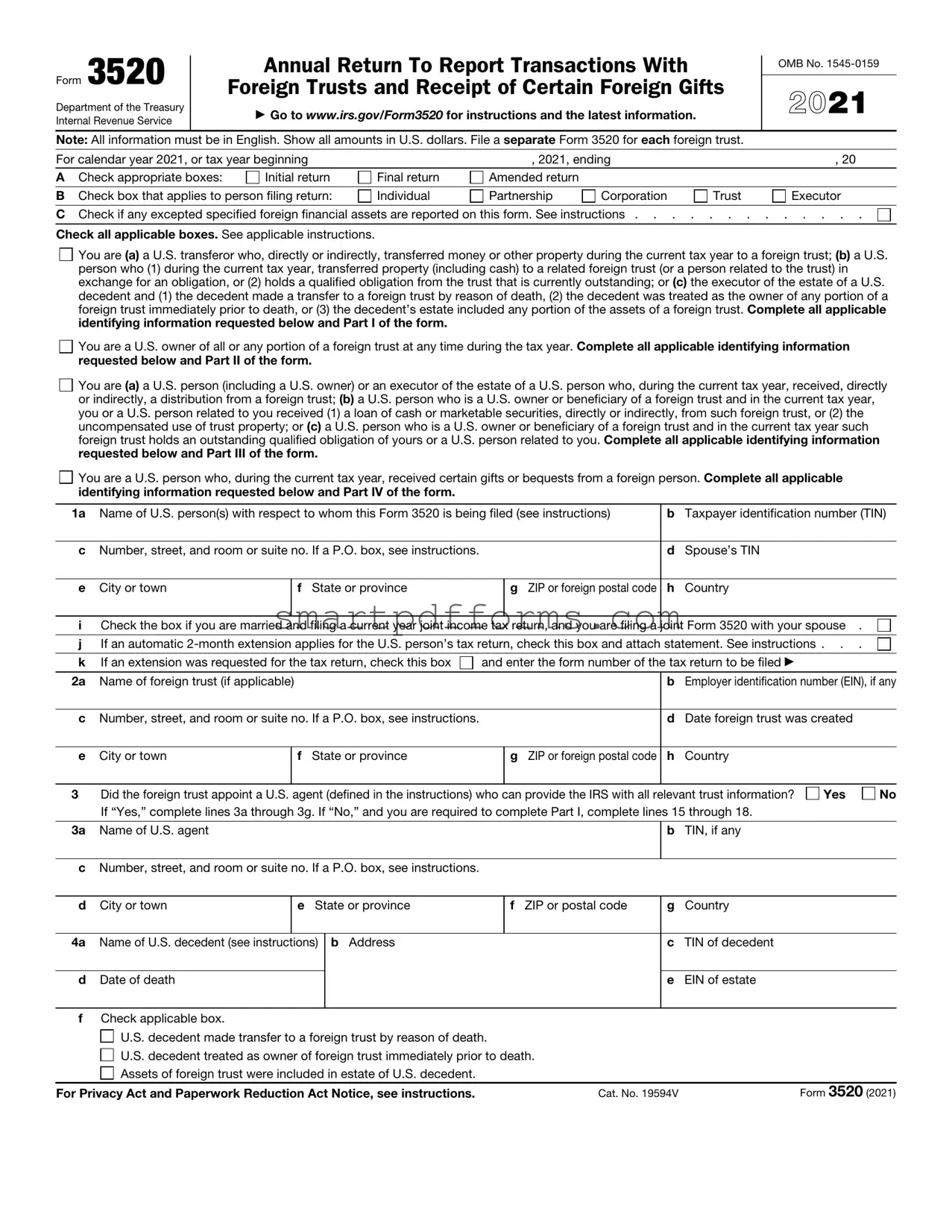


 You are
You are  You are a U.S. owner of all or any portion of a foreign trust at any time during the tax year.
You are a U.S. owner of all or any portion of a foreign trust at any time during the tax year. 
 You are
You are 
 You are a U.S. person who, during the current tax year, received certain gifts or bequests from a foreign person.
You are a U.S. person who, during the current tax year, received certain gifts or bequests from a foreign person. 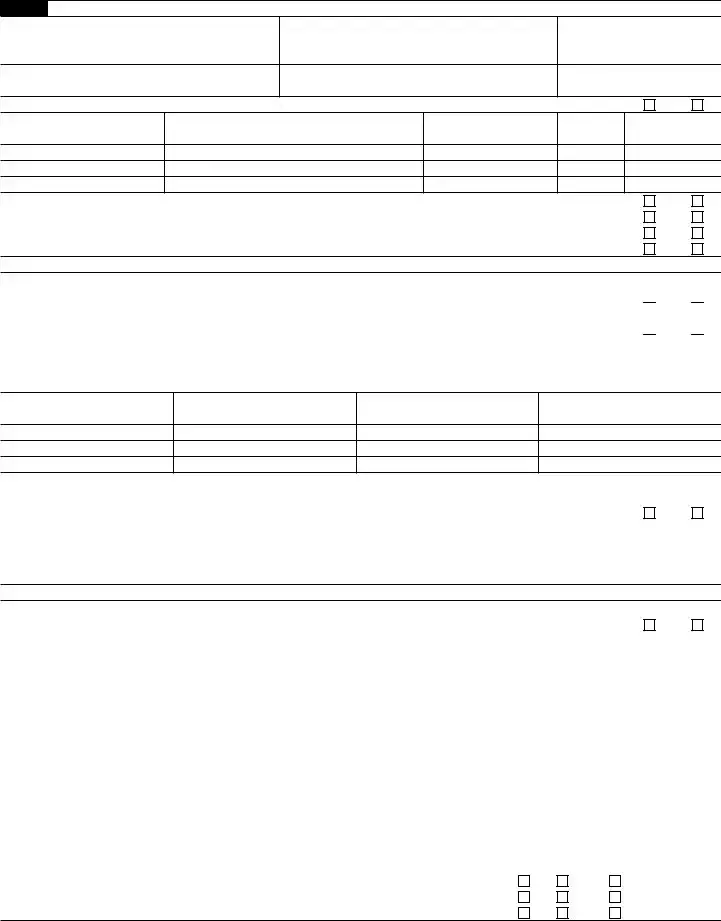

 Yes
Yes  No
No
 Yes
Yes  No
No

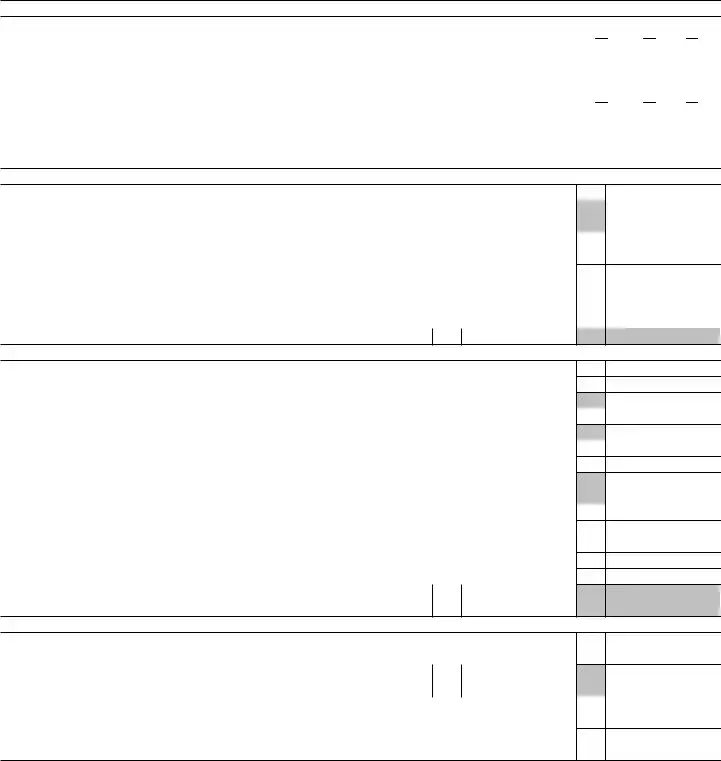

 Yes
Yes
 Yes
Yes
 No
No  N/A
N/A
 No
No  N/A
N/A